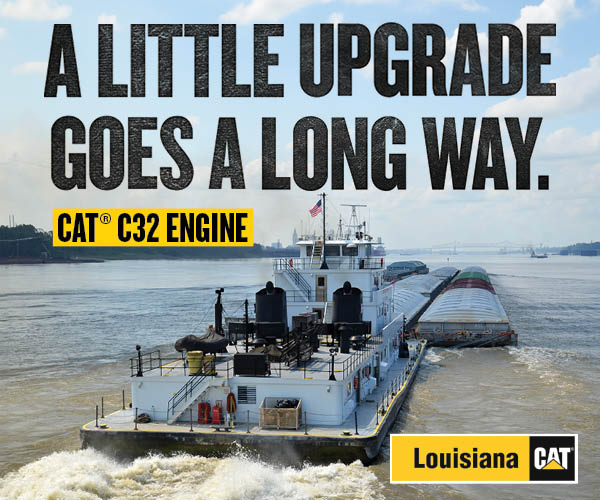House T&I Committee Sets Its Sights on Water Resources Bill for 2018
hile infrastructure was a big buzz word for the current Administration early on the focus on health care taxes and the annual budget left little room for infrastructure legislation in 2017. A big federal infrastructure plan could mean good things for the waterways but the House Transportation and Infrastructure (T&I) Subcommittee on Water Resources and Environment isn’t waiting around. In late 2017 it took the first steps towards a 2018 Water Resources Development Act (WRDA) keeping with its established two-year schedule.
Subcommittee Chairman Garrett Graves (R-LA) who Committee Chairman Bill Shuster dubbed the most knowledge person in Congress about waterways infrastructure and legislature began the meeting which took place at PortMiami what Graves called a “poster child for a lot of the water resources issues that our nation deals with.” PortMiami is also a leader in the U.S. for port and maritime infrastructure community resiliency water supply and the environment. Resiliency was a theme Graves reiterated as fundamental to the work of the committee and operating the country’s waterway resources.
The meeting was not a formal Congressional hearing but rather a “field roundtable.” Attendees did give formal opening remarks but it was much more of an open back-and-forth exchange rather than a typical Capitol Hill hearing.
“We want to hear from the stakeholders on how to be more efficient” Graves said.
Ranking member Grace Napolitano (D – CA) was also in attendance. She used her opening time to focus some on Corps funding. “We need to fund the Army Corps more. We cannot lose sight of the current financial situation. Both the administration and Congress think the Corps can do more with less. If we want 21st century infrastructure we need to do better than the status quo” Napolitano said.
And she knows the Corps can improve too. “I am interested in hearing from witnesses if their needs are being met by the Corps and if not what changes can be made” Napolitano said.
Foreign Sand Local Partnerships and Corps Guidance
Carlos Giménez mayor of Miami-Dade County began the participant introductions. He was also speaking on behalf of the National Association of Counties. One issue he mentioned right off the bat was the proposal for a new rule to permit the use of foreign sands reversing a provision from the 1986 WRDA bill. In South Florida the needed sand would be Bahamian. “We need to have this option in the future” Giménez said. “We have already expended our offshore sand. We’d have to import from other places in the U.S. Let us use Bahamian sand. It’s more like our sand in South Florida.”
Steven Cernak chief executive and port director of Port Everglades spoke on behalf of the American Association of Port Authorities (AAPA) and championed the movement WRDA 2014 made for adjusting Harbor Maintenance Trust Fund levels overtime but pushed for full funds to go to ports sooner.
Cernak has first-hand experience with a deepening project at Port Everglades which he said took 20 years to study and authorize. To help streamline the study process Cernak suggests a scoping meeting at the outset of the process with the Corps and project sponsors ahead of the cost-share agreement. This meeting sets the scope and schedule for the project clearly defining the process and beginning and ending milestones.
Amy Larson president of the National Waterways Conference returned again to funding issues and she encouraged appropriators to put more money forth for new studies and projects. She also made a plea to be cautious and show some restraint with WRDA 2018 with regard to new provisions. Significant changes were made with WRRDA 2014 and many of those changes are just being implemented. “Don’t pile on more” she said of more provisions and policy initiatives. “Give the opportunity for the others to work.”
It’s long been a complaint from the T&I committee that the Corps has failed to provide the needed guidance to enact some of the provisions of recent WRDA bills. For WRRDA 2014 10 percent of the guidance remains incomplete some of it relating to the acceleration of the project delivery process (studying authorizing and appropriating projects). For WRDA 2016 all of the implementation guidance for all study and project authorizations is complete but more than 50 percent of the guidance for policy provisions remains incomplete.
Robert Turner director of engineering and operations of the Southeast Louisiana Flood Protection Authority – East speaking on behalf of the National Association of Flood and Stormwater Management Agencies suggested the Corps rely more on local authorities to help develop the guidance.
While he makes a good point it should also be noted that the Corps is underfunded and presumably understaffed to handle all its load. On the one hand Congress wants all the implementation guidance completed quickly and for good reason but local authorities also want input in the process which could slow things down more. WRRDA 2014 and WRDA 2016 were massive legislation that reshaped the authorization process and new guidance done correctly will take some time. Between a rock and a hard place I tend to think there’s a soft spot in the middle in this case where the Corps can effectively develop new guidance and programs while respecting the need to speed up the process and involve local partners. The Corps needs to use local stakeholders to help shoulder the burden not weigh down the process with more unnecessary steps or approvals. Use local partners for their strengths and knowledge.
Even if the administration hasn’t come forth with a massive infrastructure plan Congress is ready to make way on a new WRDA bill for 2018 hoping to build on and improve what it started over the last four years.



